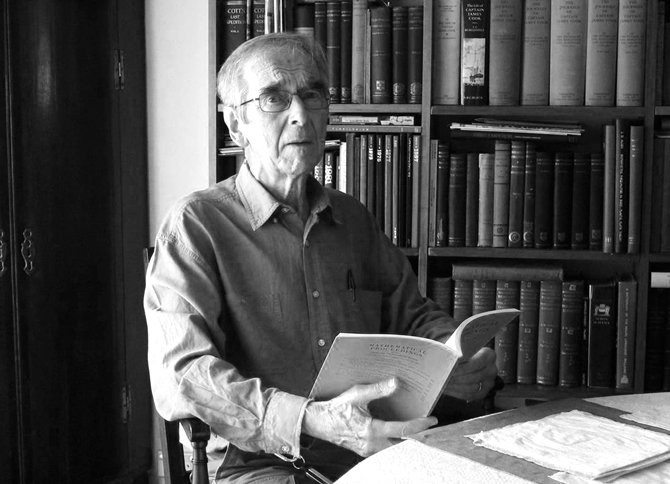Peter Lowe was a distinguished academic who made a lasting contribution to theories of structural design.

Emeritus Professor Peter Lowe
Peter Lowe completed his early schooling in Palmerston North before attending University of Auckland’s School of Engineering at Ardmore. He was one of the school’s early graduates, completing a BE (Civil) with 1st Class Honours in 1956. In the same year, he was awarded a research studentship to the University of Sydney, where he completed a Master of Engineering Science.
In 1958, he joined Ove Arup and Partners, London, designing multi-storey buildings and some early stages of the Sydney Opera House. From 1962 he spent four years as an engineering calculation analyst at Ferranti where the early digital computers were built.
In 1963, Peter joined the University of Cambridge as a Lecturer in Engineering, having completed a PhD in mathematics at Birkbeck College, University of London. Peter spent 13 years at Cambridge University supervising some excellent PhD students. In 1971 Cambridge University Press published his book Classical Theory of Structures. In this book Peter explained that whilst techniques of structural analysis were then based on multiple different methods, it was possible to efficiently solve many problems with one approach based on the differential equation for beam bending. Peter’s other research interests were in plate bending mechanics and structural optimisation.
In 1977, Peter was appointed Professor of Structural Engineering, University of Strathclyde, Glasgow. Whilst there he wrote his book Basic Principles of Plate Theory (1982). His intent was to present material not easily accessible to the engineering profession. After retirement he expanded this text to Basic Principles of Plates and Slabs (2005).
In 1981, Peter was appointed to a personal chair in Civil Engineering at the University of Auckland, and in 1986 became Head of Department. His research at Auckland broadened to include timber engineering and externally reinforced concrete which he saw as having particular relevance to earthquake damaged structures. He also looked at recycling of waste materials including the use of paper as aggregate in lightweight concrete.
University of Auckland’s Professor Michael Pender remembers Peter as a thoughtful and gracious colleague who led the department in a quiet, kind and fair manner. Peter retired from the Department of Civil and Environmental Engineering at the University of Auckland in 2001 and moved to Sydney to live close to his family.
Throughout his career Peter maintained a keen interest in engineering heritage. In the 1980s he was a founding member of Engineering New Zealand’s National Engineering Heritage Committee, and from 1996 until he moved to Sydney in 2001, served as Secretary. During his time on the heritage committee, Peter researched and prepared entries for the Dictionary of New Zealand Biography, describing distinguished engineers including James Fulton, Samuel Jickell, George Murray, Samuel Crookes, Arnold Downer and Charles Ford.
Peter contributed a number of papers to Australasian heritage conferences and was the organiser and editor of the Proceedings of the 2nd Australasian Heritage Conference held in Auckland in February 2000.
Peter was made a Fellow of the Institution of Professional Engineers New Zealand (IPENZ) in 1979 and in the 1980s served on the IPENZ Council.
In 2004, Peter was appointed Honorary Professor of Civil Engineering at the University of Sydney, where he continued his academic writing and research on the theory of plates and slabs, adding to his 50 publications in addition to five books.
Peter “was a deep thinker and came up with many interesting and novel ideas,” Professor Michael Pender recalls. “His independence of mind meant that he was happy not to be following current fashionable research topics. He also pondered deeply the current state of the engineering profession and what the future held.”
Entry by John La Roche
Page last updated 21 August 2020
